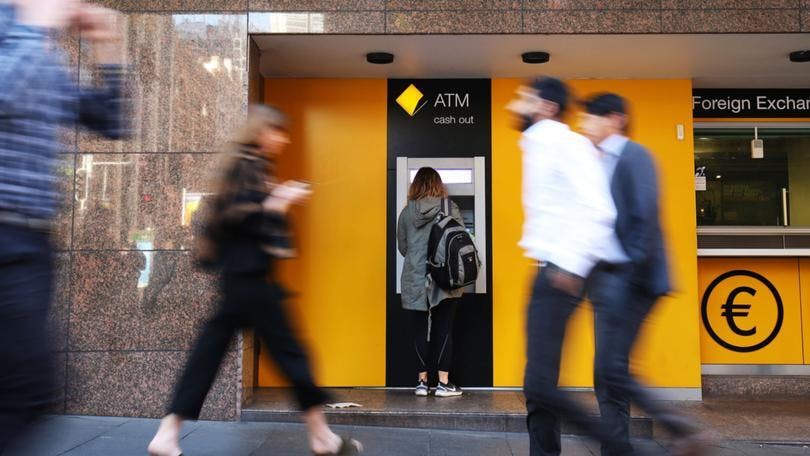Australia’s bosses are cashing in while workers’ wages decline

The gap between corporate profits and workers’ wages in Australia is at an all-time high. While the economy appears to be recovering from the COVID-induced recession, it’s a recovery for the bosses alone.
The March GDP figures released by the Australian Bureau of Statistics indicate that the economy grew by 0.8 percent in the first three months of the year, rounding out at 3.4 percent annual growth. But most people are suffering from a real wage cut as the rate of inflation increases. As economist Greg Jericho wrote in a recent article for the Guardian: “You can’t eat GDP”.
Over the last year, wages have increased by 2.4 percent on average, while inflation has reached 5.1 percent. Prices of non-discretionary items (things most people can’t avoid paying for, such as food, petrol and utilities) have risen by 6.6 percent. Lower income households—which spend a greater portion of their income on non-discretionary items—are experiencing a shocking decline in living standards, worsened by rising rents.
“The 2.6 percent fall over the past 12 months is so great that it means real wages are now 2.2 percent below what they were at the 2019 election, 1.5 percent below what they were at the 2016 election and essentially the same as they were in September 2013”, Jericho writes.
This will come as no surprise to anyone who rents, drives a car, is paying off a mortgage or is responsible for the weekly grocery shop.
The unemployed have it even worse. After raising the JobSeeker payment in 2020, the Morrison government brought it straight back down to below-poverty levels—$320 a week for singles with no dependants. The new Labor government says it has no plans to change it.
On the other side of the ledger, company profits are at a historic high of 31 percent of national income. In the first quarter of this year, profits jumped 10.2 percent. Mining profits increased by almost 50 percent over the last year, compared to an 8.5 percent average increase in non-mining industries. In fact, mining industry profits are now greater than those of all other industries combined.
The mining industry CEOs tell us that this is good for the country. But the flow-on effects of mining to the rest of the economy are exaggerated, and the profits are primarily windfalls to faceless elites—a 2011 Australia Institute study (the last substantial one of its kind) found that 83 percent of profits went to overseas investors.
The profits boom puts the current “debate” about wages into perspective. The Albanese government has asked the Fair Work Commission to give a 5.1 percent wage increase to those on the minimum wage and other, undefined, low-paid awards. In making the submission, Employment and Workplace Relations Minister Tony Burke said he doesn’t want the lowest paid workers to go backwards. But 5 percent is only $1 an hour, and workers have already gone backwards.
Focusing on a tiny increase to the minimum wage conceals the millions of other workers who are now sliding backwards. Treasurer Jim Chalmers has indicated that the Labor government will not be advocating for wage rises across the board, assuring the Australian Financial Review that he has “not proposed that there’ll be some kind of automatic mechanism that takes the most recent inflation number and automatically flows it through to wages”.
The widening gap between profits and wages is not due just to the high demand for iron ore, coal and gas in international markets. It is class war waged by the rich and powerful that has not been effectively challenged by workers and their unions. Strong unions and high rates of strike action have historically won higher wages, and the absence of struggle has lowered them. Union membership has plummeted in recent decades, as has the amount of industrial action taken by workers.
Union leaders have failed to fight for better wages even as they rapidly deteriorate. The Australian Council of Trade Unions might tweet prolifically about rising inequality and make endless submissions to various commissions about wage targets but has done nothing to organise workers to fight their bosses for a raise.
Take the public sector. In New South Wales, public service workers’ wages were capped in 2011—it has taken the unions more than a decade to start striking against the cap, and they have not yet called industry-wide strike action. In Victoria, the state Labor government capped wages at 1.5 percent in January this year and the Labor-affiliated unions have not lifted a finger in response. The union leadership often point to anti-strike legislation as reason for their inaction, but when the moments of legal opportunity arise every three or so years, most still do nothing.
Now workers are suffering the biggest decline in real wages this century. This is not reflective of a generalised drop in the economy—in fact workers were better off when the economy was in recession two years ago. Australia’s bosses are raking in historic profits and overseeing a massive transfer of wealth from the bottom of society to the top.
Every indication is that living standards are going to keep dropping in the coming months and possibly years. Only with a serious fight from below can workers start to arrest the decline.